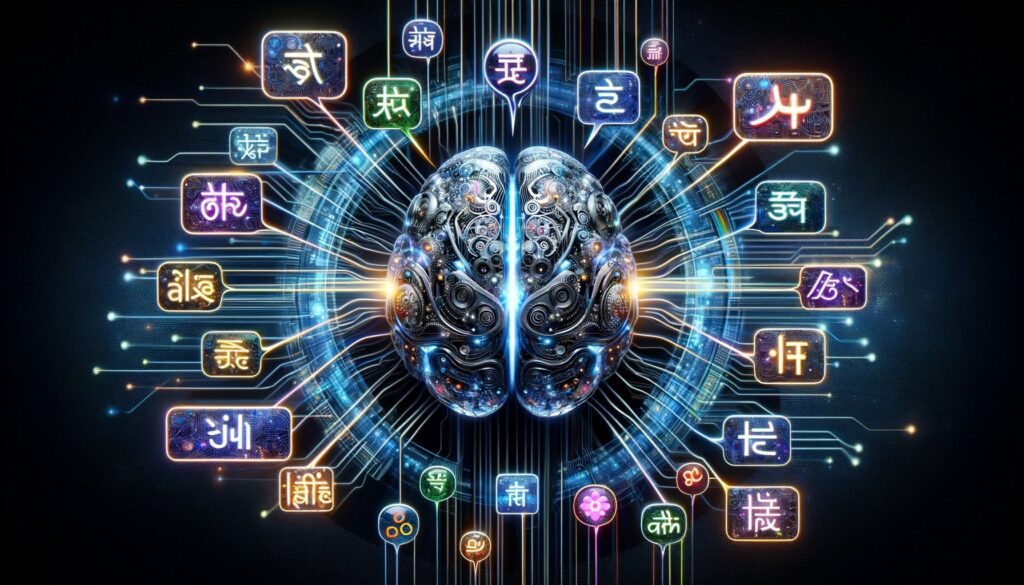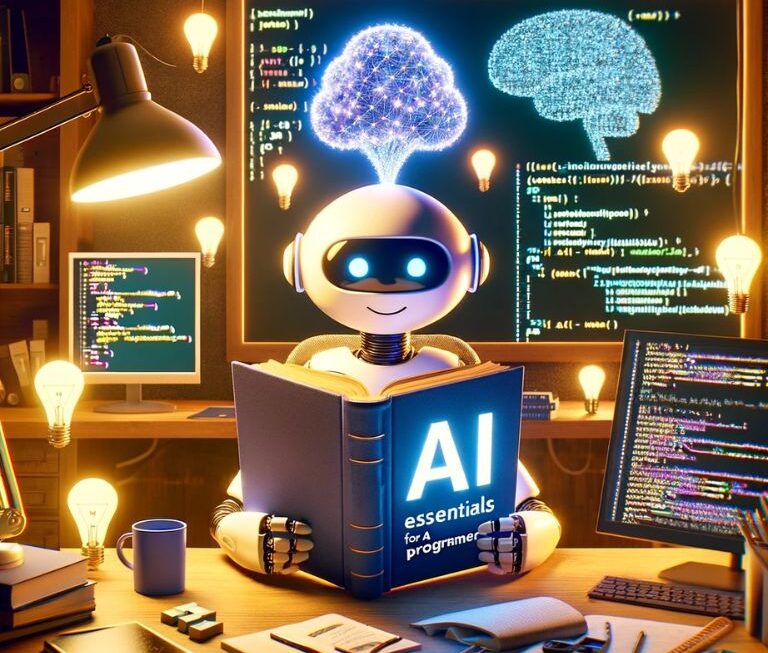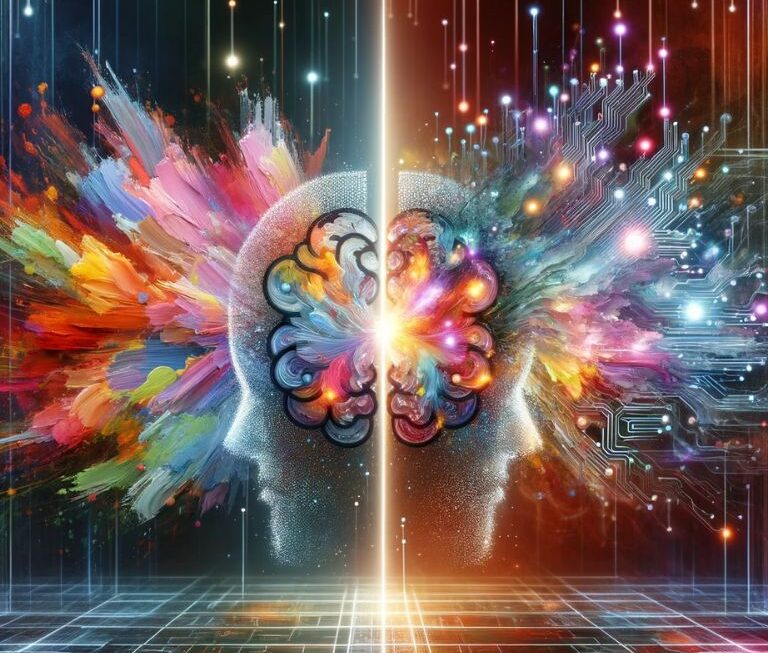In the realm of artificial intelligence, Generative AI has emerged as a transformative force, reshaping how we interact with technology and data. At its core, Generative AI refers to algorithms capable of creating content, whether it’s text, images, or even code, that is indistinguishable from human-generated content. This advanced form of AI, which includes models like OpenAI’s GPT series, relies heavily on understanding and processing human language to generate responses that are coherent, relevant, and sometimes, strikingly creative.
The Role of Language in AI Learning and Output Generation
Generative AI’s ability to process and generate language has profound implications for various fields, from customer service to content creation and programming, elevating efficiency and creativity. However, achieving accuracy and cultural sensitivity is paramount for success. In this article, we delve into the current language limitations faced by Generative AI models, examine strategies being deployed to overcome these challenges, and explore the prospects of developing truly multilingual, context-aware AI systems that can revolutionize diverse industries.
The Critical Role of Language in AI’s Learning and Output Generation
Generative AI’s language processing ability has profound implications for customer service, content creation, and programming, boosting efficiency and creativity. However, accuracy and cultural sensitivity are vital for success. In this article, we delve into current language limitations, strategies to overcome them, and the future of creating multilingual, context-aware AI systems.
Identifying Language Limitations in Current AI Models
Generative AI’s ability to understand and utilize human language is impressive, yet it’s not without its limitations. Despite advancements, these AI models often struggle with nuances and complexities inherent in natural language, leading to significant barriers in understanding and expression.
Analysis of Language Barriers in AI Understanding and Expression
The language barriers faced by AI primarily stem from its reliance on pattern recognition rather than genuine comprehension. AI models, trained on vast datasets, excel at identifying common patterns in language use. However, they lack an innate understanding of linguistic subtleties. This gap becomes evident in scenarios involving sarcasm, irony, cultural references, or complex syntax. The AI may accurately process the words but miss the underlying meaning or sentiment. This limitation not only affects the quality of AI-generated content but also its ability to accurately interpret user inputs, especially in diverse and multilingual contexts.
Examples of Misinterpretation and Context Mismanagement
- Literal Interpretation of Idioms: Phrases like “spill the beans” or “break the ice” are often taken at face value by AI, leading to comical or nonsensical interpretations.
- Cultural Context Misses: References specific to a culture or region, such as colloquialisms or historical allusions, can be completely lost on AI, resulting in irrelevant or inappropriate responses.
- Sarcasm Detection: AI frequently struggles to discern sarcasm, interpreting sarcastic remarks as serious statements, which can lead to misunderstandings in communication.
- Homonyms and Wordplay: Words with multiple meanings or puns present a challenge, as AI may not contextualize correctly, opting for the more common or literal meaning.
- Emotional Nuance: Detecting and conveying the emotional tone in text remains a hurdle, with AI often misrepresenting or overlooking the sentiment behind the words.
- Complex Sentence Structures: Sentences with intricate structures or embedded clauses can confuse AI, leading to misinterpretation or oversimplified responses.
The Impact of Linguistic Diversity on AI Learning

The vast spectrum of human languages adds another layer of complexity to the development of Generative AI. Each language, with its unique structure, idioms, and cultural context, presents distinct challenges, particularly when AI systems are expected to operate seamlessly across multiple languages.
Challenges Posed by Multilingual Data Processing
- Varying Language Structures: Languages differ in syntax, grammar, and sentence construction, making it difficult for AI to apply learning from one language to another.
- Limited Training Data for Certain Languages: While abundant data exists for some languages like English, many others have significantly less data available, leading to underperformance in these languages.
- Contextual Ambiguity: Words or phrases that are clear in one language may have ambiguous meanings in another, complicating the AI’s ability to understand and respond appropriately.
- Dialectal Variations: Even within the same language, regional dialects can vary greatly, presenting additional challenges for AI in understanding and generating accurate content.
- Script and Orthography Issues: Languages with non-Latin scripts or complex orthographies (like Chinese or Arabic) require specialized processing capabilities that are challenging to develop.
The Need for AI to Comprehend Cultural Nuances and Idiomatic Expressions
Beyond the structural aspects, AI systems must also grasp the cultural contexts that imbue language with meaning. This includes understanding idiomatic expressions, humor, and references that are deeply rooted in a particular culture. The inability to comprehend these nuances not only hampers the AI’s communication effectiveness but can also lead to miscommunications or cultural insensitivity. To truly excel, AI must evolve beyond mere literal interpretation and develop a more nuanced understanding of the cultural and emotional layers of language. Achieving this level of comprehension is a significant challenge, requiring not only advanced technology but also a diverse and inclusive approach to AI training and development.
Technological Advancements Addressing Language Barriers
The field of Natural Language Processing (NLP) and machine learning has witnessed significant advancements, which are pivotal in addressing the language barriers inherent in Generative AI. These breakthroughs are pushing the boundaries of what AI can understand and achieve in language processing.
Recent Breakthroughs in NLP and Machine Learning
Recent progress in NLP and machine learning has been groundbreaking. The development of transformer-based models, such as OpenAI’s GPT series and Google’s BERT, has revolutionized AI’s language capabilities. These models use deep learning techniques to process and generate text in ways that are more contextually aware and nuanced. Another key advancement is the use of large-scale language models that can learn from vast datasets, enabling AI to grasp a wider range of linguistic nuances. Additionally, efforts in unsupervised and semi-supervised learning allow AI to learn from less structured data, making it more adaptable and efficient in understanding diverse language forms.
AI Successfully Overcoming Language Hurdles
- Multilingual Chatbots: AI-powered chatbots that can communicate in multiple languages, understanding and responding accurately to customer queries across different cultures and regions.
- Real-Time Translation Services: AI systems like Google Translate have made significant strides in providing real-time, accurate translations for a wide range of languages, greatly facilitating cross-cultural communication.
- Sentiment Analysis Tools: Advanced AI tools are now capable of accurately assessing the sentiment behind user-generated content, even in languages with limited training data, enhancing the understanding of customer feedback and social media interactions.
- Content Moderation Systems: AI models that can effectively moderate content in multiple languages, identifying and addressing inappropriate or harmful content across diverse linguistic landscapes.
- Language Learning Applications: AI-driven language learning apps have shown remarkable ability in helping users learn new languages, utilizing adaptive algorithms to personalize learning experiences based on individual progress and language nuances.
Human-AI Collaboration in Language Learning

The journey towards sophisticated language comprehension in AI involves a crucial component: human-AI collaboration. This partnership plays a pivotal role in teaching AI the intricacies of human language and ensuring its contextual relevance.
The Role of Human Oversight in Teaching AI Linguistic Subtleties
Human oversight is essential in guiding AI through the maze of linguistic subtleties. Language experts, linguists, and native speakers contribute by annotating and correcting AI-generated text, helping the AI to understand and correct its errors. This process includes teaching the AI about idiomatic expressions, cultural references, and the emotional weight of words. Furthermore, human feedback helps in fine-tuning the AI’s response mechanisms, ensuring that it not only understands language structure but also the intent and sentiment behind the words. This collaborative effort bridges the gap between raw computational power and the nuanced understanding that comes naturally to humans.
Collaborative Models for Language Acquisition and Refinement in AI
Collaborative models in AI language learning leverage the strengths of both humans and machines. These models often involve iterative processes where AI generates language output, humans evaluate and provide feedback, and the AI learns from this input. Crowdsourcing is another approach, where inputs from a diverse range of users contribute to the AI’s learning, making it more robust and inclusive. Another innovative model is interactive learning, where AI interacts with users in real-time, learning from each interaction. This not only accelerates the learning process but also ensures that the AI is exposed to a wide variety of linguistic styles and preferences, enhancing its ability to understand and mimic human language more effectively.
Ethical Considerations and Inclusivity in AI Language Training
As AI continues to evolve, ethical considerations and inclusivity in language training have become paramount. These aspects are critical not only for the fairness and accuracy of AI systems but also for their acceptance and effectiveness in diverse global contexts.
Addressing Biases in Language Training Datasets
- Diverse Data Sources: Incorporating texts from a wide range of cultures and languages to prevent over-representation of any single group.
- Bias Detection Algorithms: Utilizing specialized algorithms to identify and mitigate biases in training datasets.
- Regular Audits: Conducting periodic reviews of AI models and datasets to ensure they remain free of biases.
- Community Involvement: Engaging with communities and language experts to understand and rectify potential biases.
- Ethical Guidelines: Establishing and adhering to ethical guidelines for AI development, focusing on fairness and inclusivity.
Ensuring Diverse and Inclusive Language Representation in AI Models
It’s crucial that AI models not only comprehend a wide range of languages but also reflect the diversity within each language. This includes understanding variations in dialect, slang, and regional expressions. Ensuring inclusivity in language representation requires a concerted effort to gather and incorporate data from underrepresented languages and dialects. It also involves being mindful of the cultural contexts and societal norms that shape language use. By doing so, AI systems can avoid perpetuating stereotypes and instead become tools that respect and celebrate linguistic and cultural diversity. Achieving this level of inclusivity in AI models not only improves their accuracy and reliability but also fosters trust and broader acceptance among users worldwide.
Towards a Multilingual, Context-Aware AI
The future of Generative AI is brightly envisioned as a landscape where AI not only speaks multiple languages but also understands and respects the cultural and contextual nuances within each. This future is being shaped by ongoing advancements and predictions in AI’s linguistic capabilities.
Predictions for AI’s Evolving Linguistic Capabilities
- Advanced Context Understanding: AI will likely develop a deeper understanding of context, enabling it to discern meaning more accurately across various languages and cultures.
- Improved Language Fluidity: Expectations are for AI to exhibit more natural and fluent language use, closely mimicking human speech patterns and conversational nuances.
- Enhanced Emotional Intelligence: AI could become more adept at detecting and appropriately responding to emotional cues in language, offering more empathetic and tailored interactions.
- Increased Language Diversity: AI is predicted to support a broader array of languages, including those currently underrepresented in technology, thus fostering greater global inclusivity.
- Real-time Language Adaptation: Future AI may dynamically adapt to new dialects, slang, and emerging language trends, staying up-to-date with the ever-evolving nature of human language.
The Importance of Continuous Innovation in Language Processing Technologies
- Keeping Pace with Linguistic Changes: Continuous innovation is vital to keep AI relevant in the face of rapidly evolving languages and communication styles.
- Bridging Cultural Gaps: Innovations in language technology are key to bridging cultural divides, enabling more effective and empathetic cross-cultural communication.
- Enhancing Accuracy and Reliability: Ongoing advancements will lead to more accurate and reliable language processing, critical for applications ranging from translation services to content creation.
- Supporting Global Connectivity: Continuous development in language technologies plays a significant role in supporting global connectivity, allowing people from different linguistic backgrounds to interact seamlessly.
- Fostering Ethical AI Development: Innovation must also focus on ethical aspects, ensuring AI systems are developed and used responsibly, respecting privacy, and promoting fairness.
Conclusion: The Road Ahead for Language-Proficient AI
As we conclude, the journey to create language-proficient AI is both challenging and exhilarating. Advancements in Generative AI, particularly in understanding and generating human language, represent a bridge between human intelligence and artificial comprehension. The future holds the promise of AI systems seamlessly interacting across languages and cultures, but it demands continuous innovation, ethical considerations, and a commitment to inclusivity. By addressing limitations and fostering responsible AI development, we pave the way for globally attuned and ethically grounded AI systems, enhancing communication and understanding across diverse human cultures.




